This post is part of a spin-along through 51 Yarns by Jacey Boggs Faulkner, in the Wool n’ Spinning community. For other posts in this series, check here.
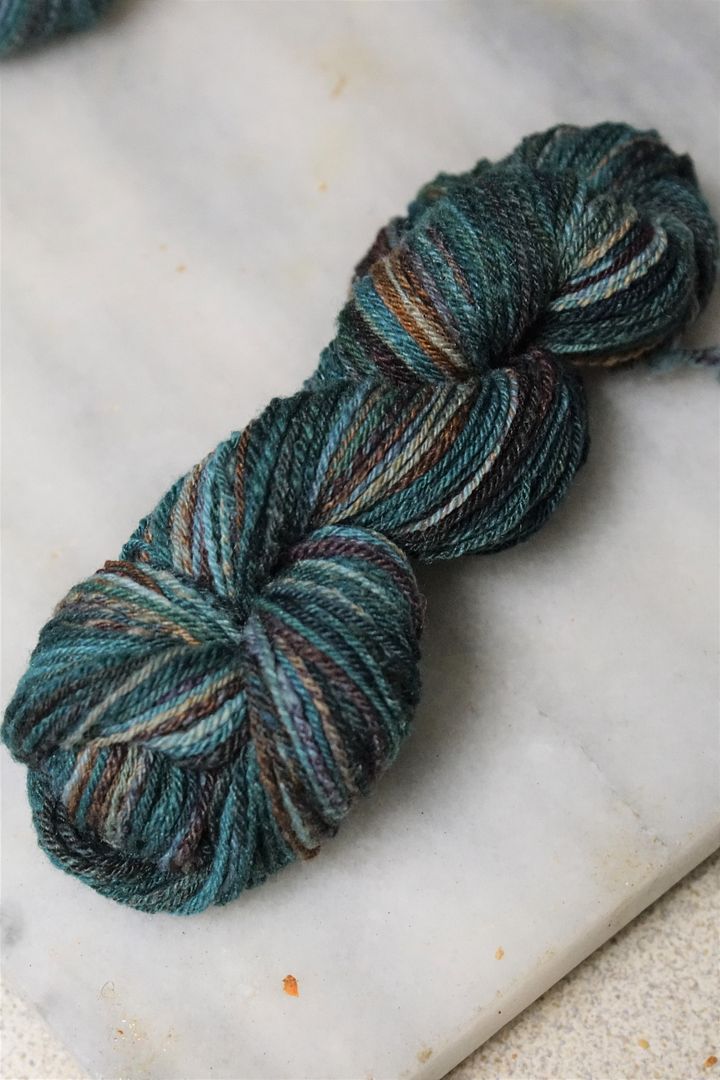
Yesterday I wrote about how I struggled to define my default yarn, but came at that spin by looking at each decision, and taking the choice that seemed easiest. For this yarn, I did the opposite. I didn’t change the “what,” but I changed all of the “how.” I used the same fiber, and set the goal of making basically the same yarn (a 3-ply sock yarn), but changed everything I could think of method.
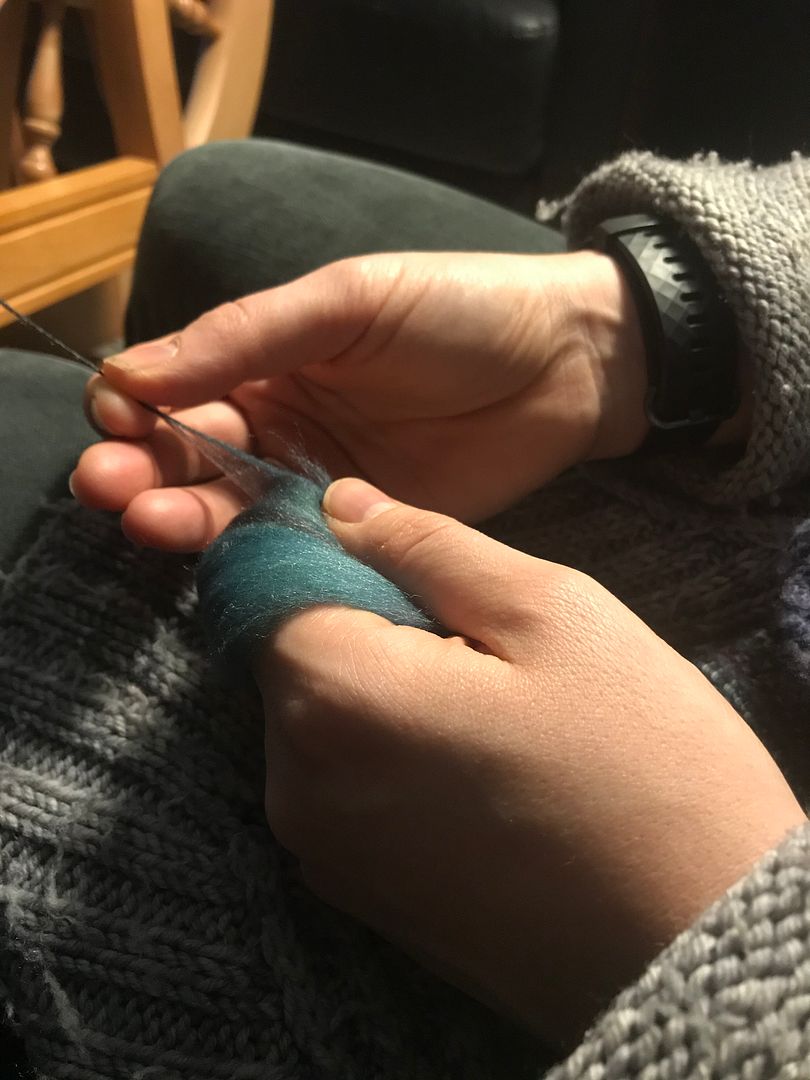
Fiber prep? I didn’t split the braid at all. I spun chunks of the whole top.
Drafting method? This was harder to choose, since my default, short continuous backward, is about as middle-of-the-road as it gets. It doesn’t really have an opposite. I chose to spin over the fold, something I almost never do and have never gotten comfortable with. I spun off the top of the fold, which I have never done. I also used a short backward draft, which I have never actually done officially (I did used to call short continuous backward by the name short backward, but the nomenclature shifted a bit. What I’m now calling short backwards is the actual reverse of short forward, just moving the back hand back.
To complete the methodical weirdness, I switched hands. However, this might have somewhat canceled out the short backward idea, since holding the fiber in my left hand while doing short backward meant that my left hand was still the “active” hand… but anyway, it was successfull unnatural.
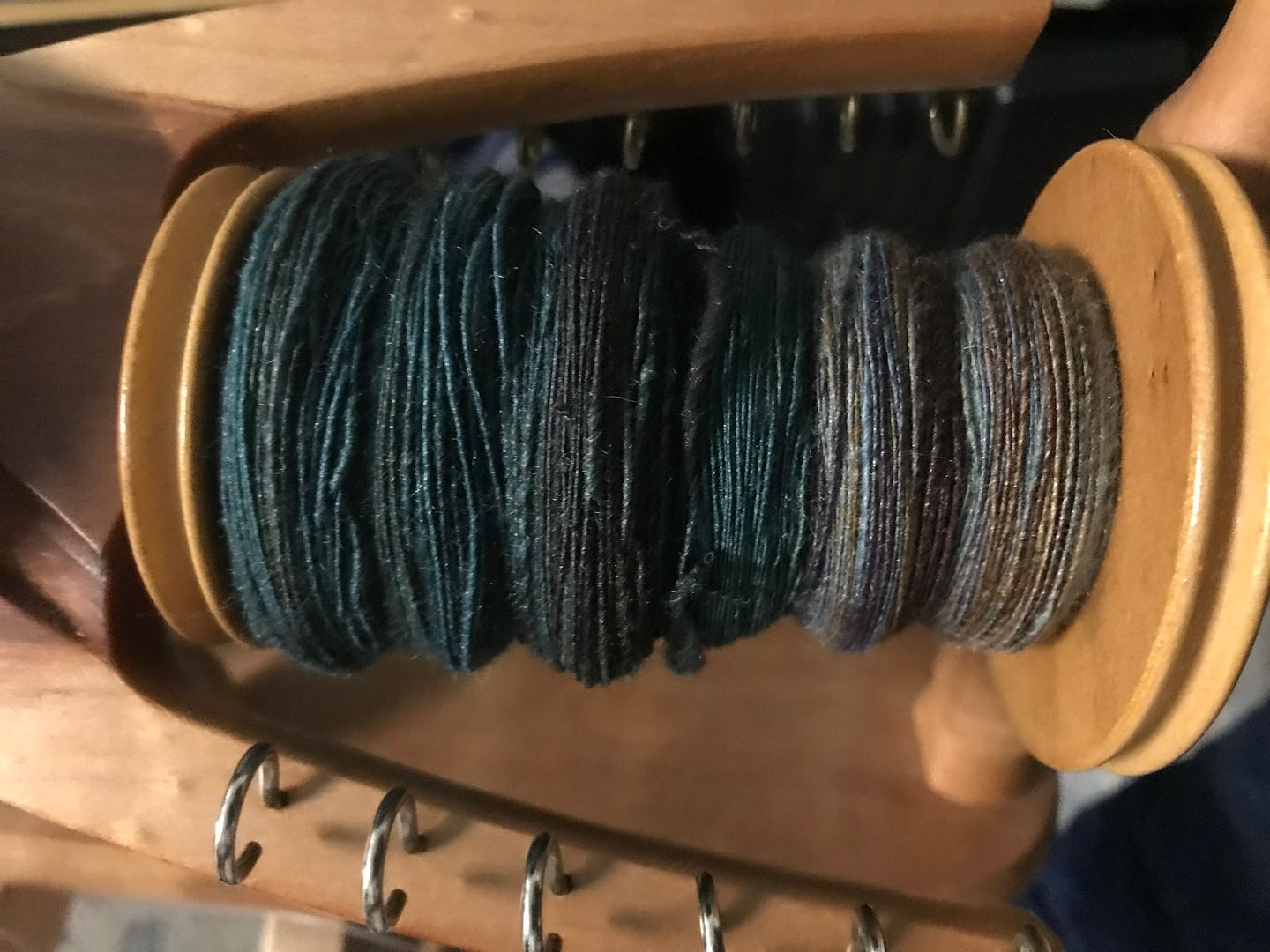
The singles were pretty wild, compared to my last spin. If I accidentally made any very big slubs, I did take those out, but I didn’t worry about all the smaller inconsistencies.
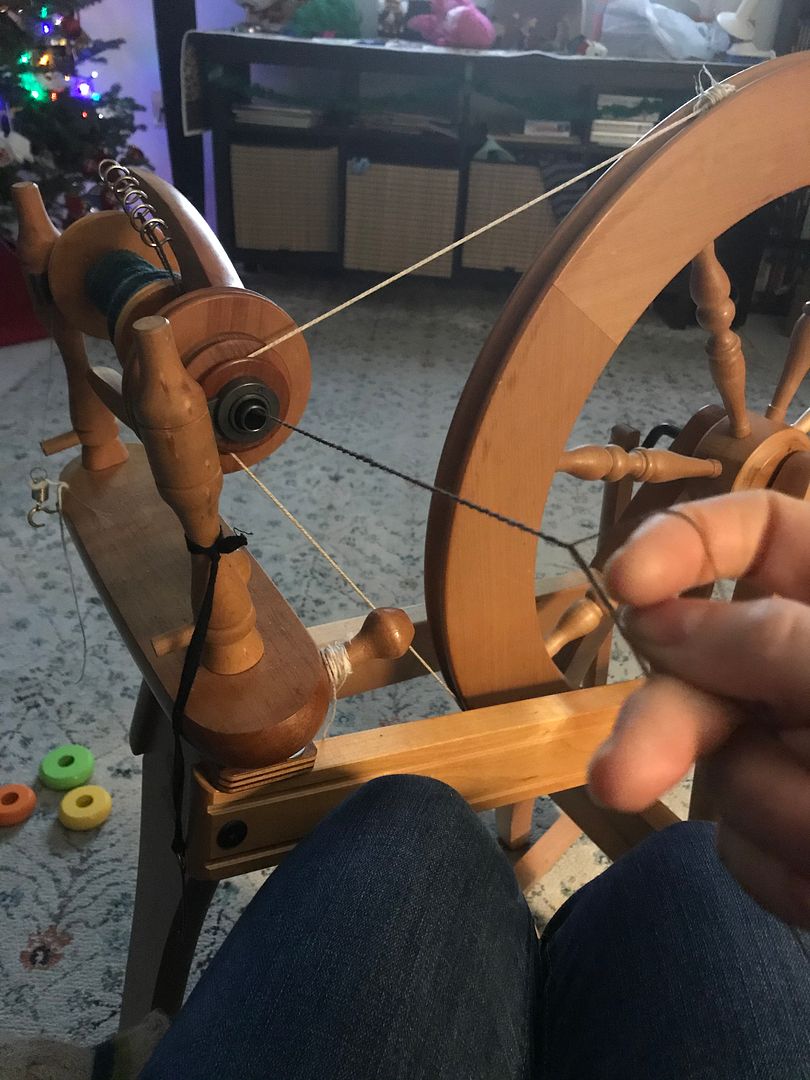
To amplify the nemesis-ness, I chain plied. I don’t hate chain plying, but it’s not my favorite, and I figured it would serve to amplify the inconsistencies in my singles.
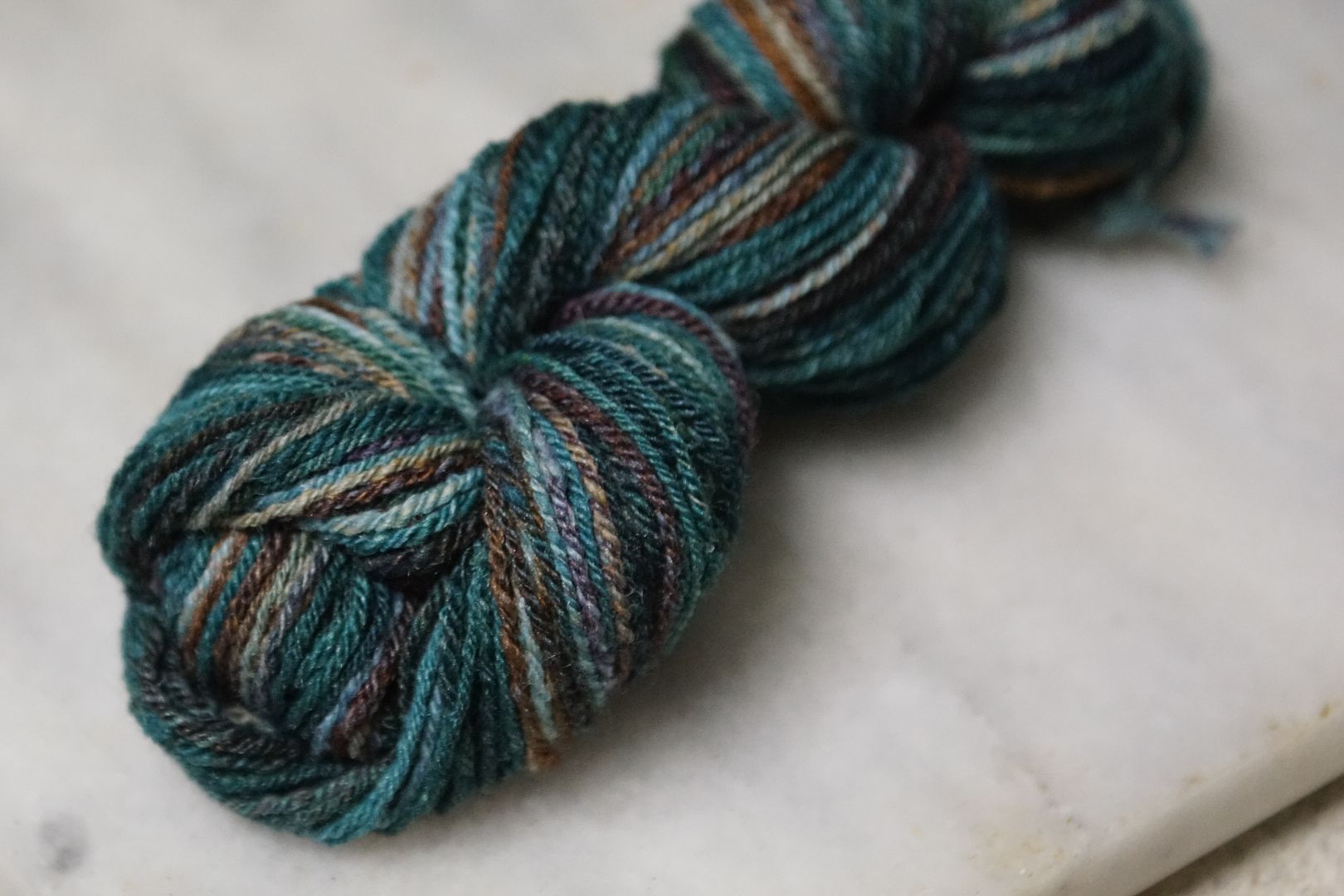
Well, wouldn’t you know, it still made a beautiful yarn. I would not have thought about chain plying a space-dyed yarn, but it looks awesome color wise. And while you can tell the singles are uneven if you zoom in on the yarn, the overall gauge is consistent.
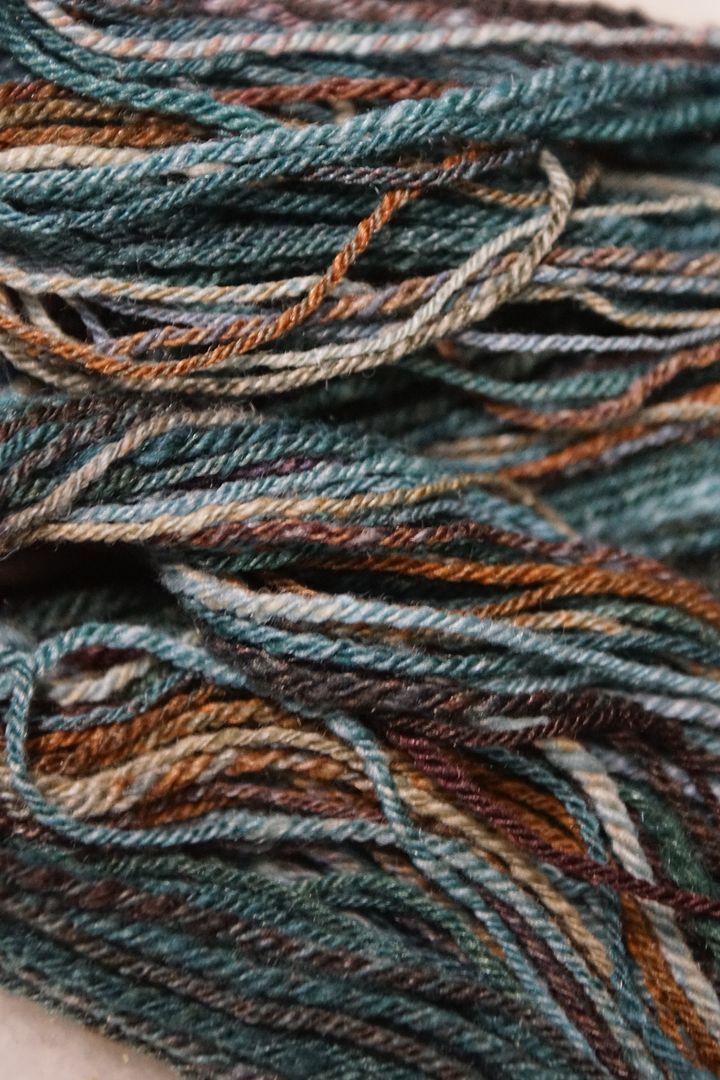
The main practical differences between this yarn and my default yarn are that 1) it was slower to make, and 2) it is thicker. I was still aiming for a roughly fingering weight, but ended up with more of a heavy-fingering/DK.
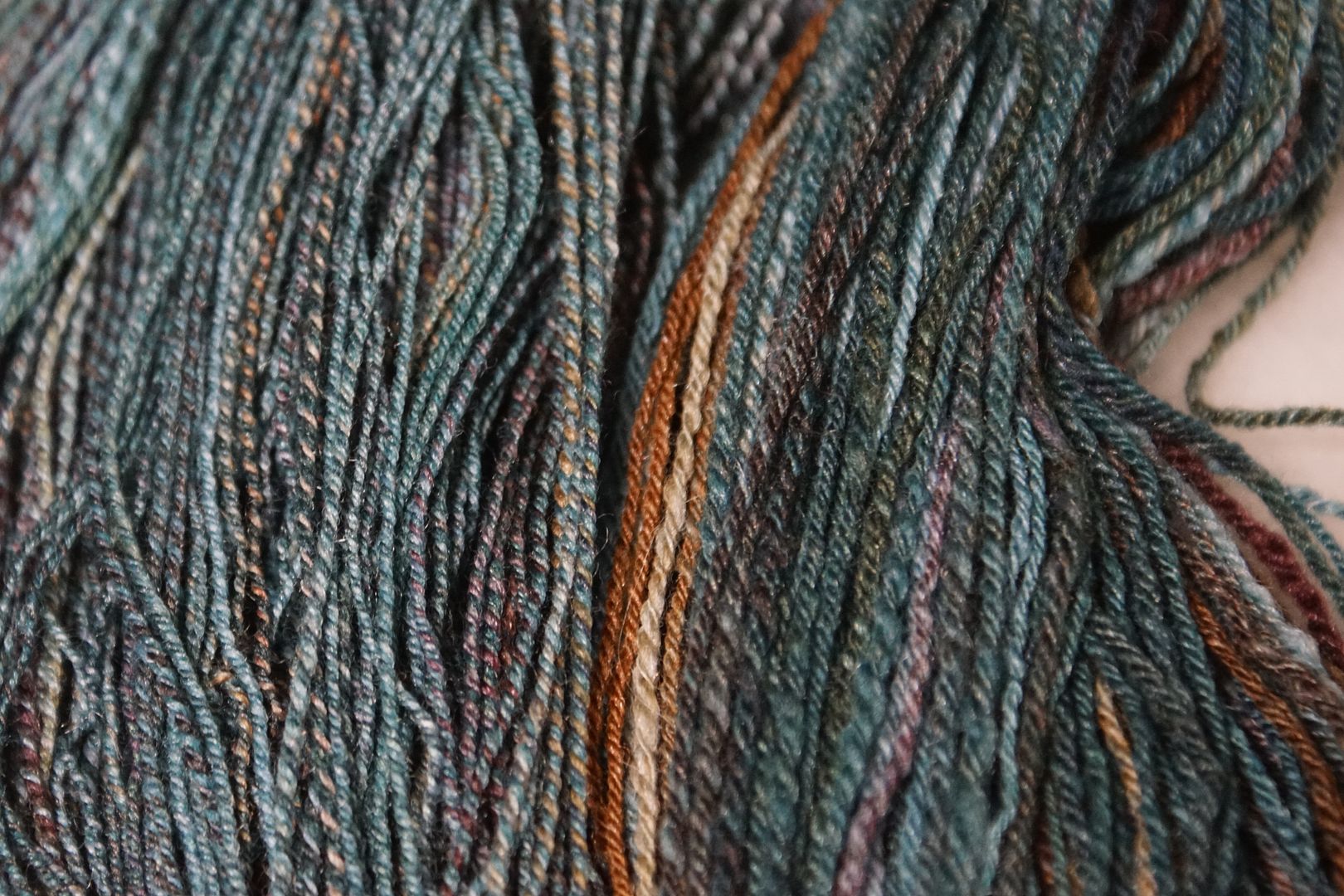
On US 3s, my default yarn was loose and open; this yarn made a firm but useful fabric. On US 1s, my default yarn was just about dense enough for socks; this yarn made a solid wall of inflexible fabric.
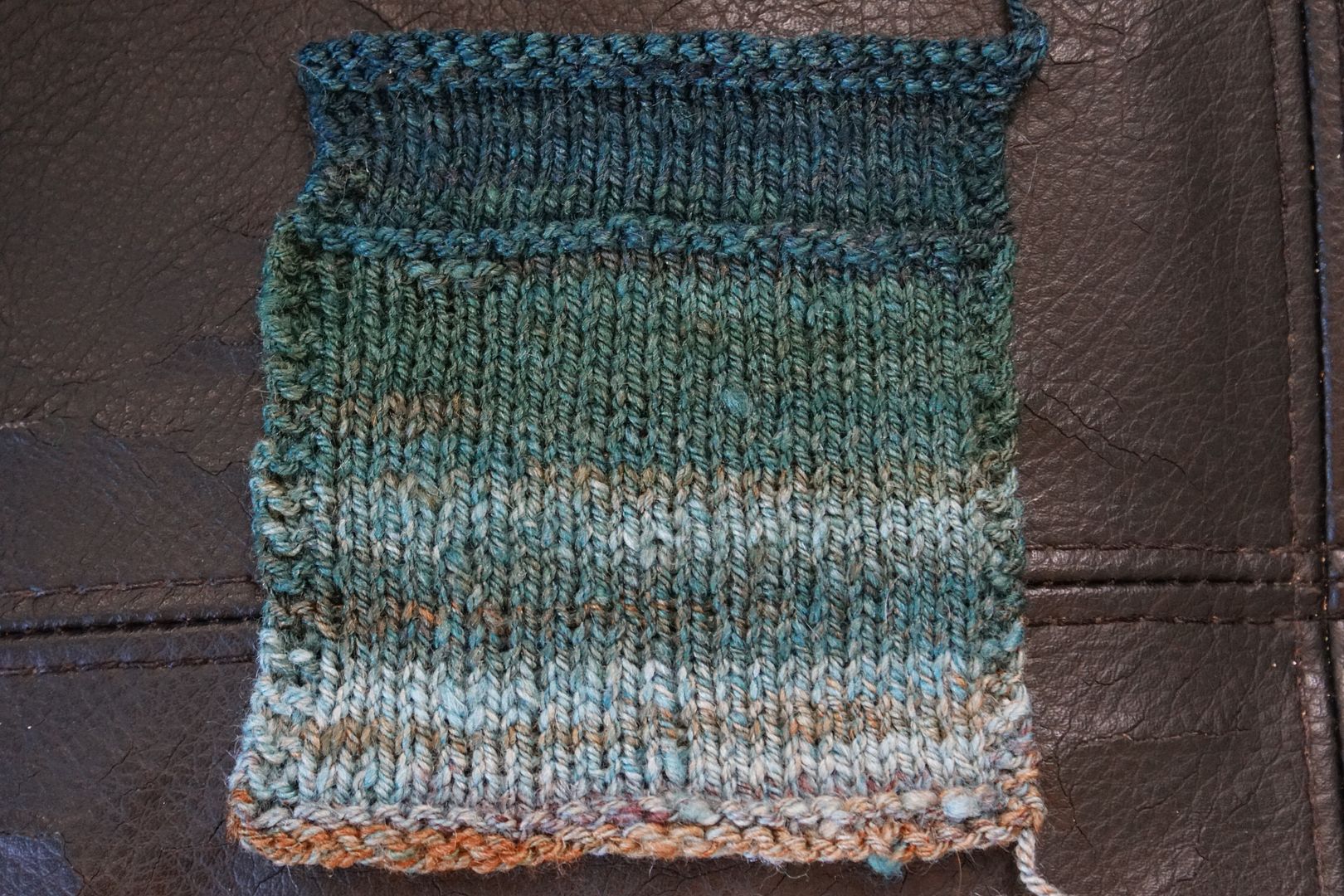
So, that means that speed and thickness are markers of ease for me. That makes perfect sense for my level of spinning. Also appropriate to my level of spinning: I can still make an even-enough yarn with an uncomfortable draft.
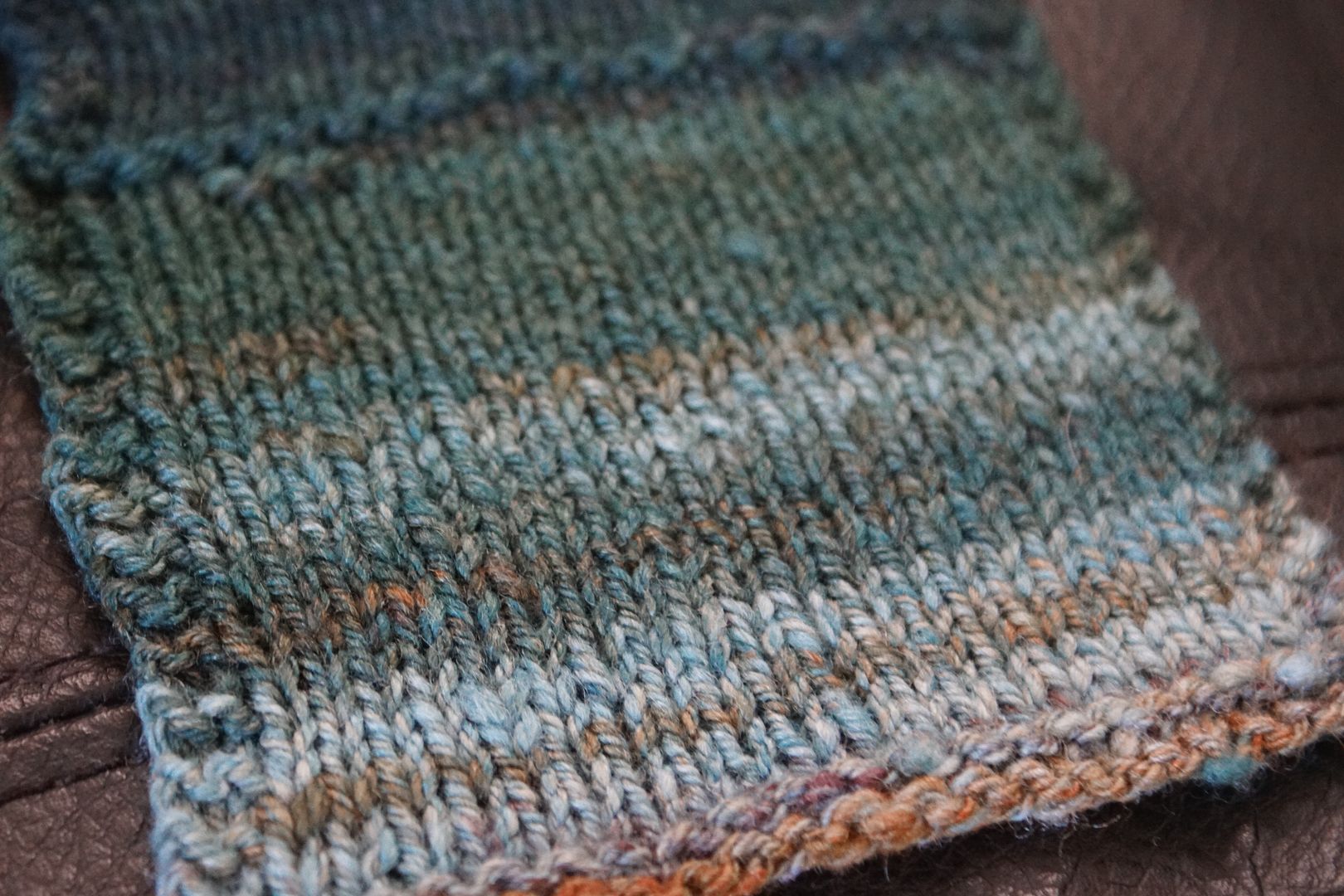
I’m thinking I could use this yarn for the heels and toes of a pair of socks, using the default yarn for the body of the socks. I have to admit, I’m really excited about how the space-dyed colours look chain-plied; I think I’ll try that again.
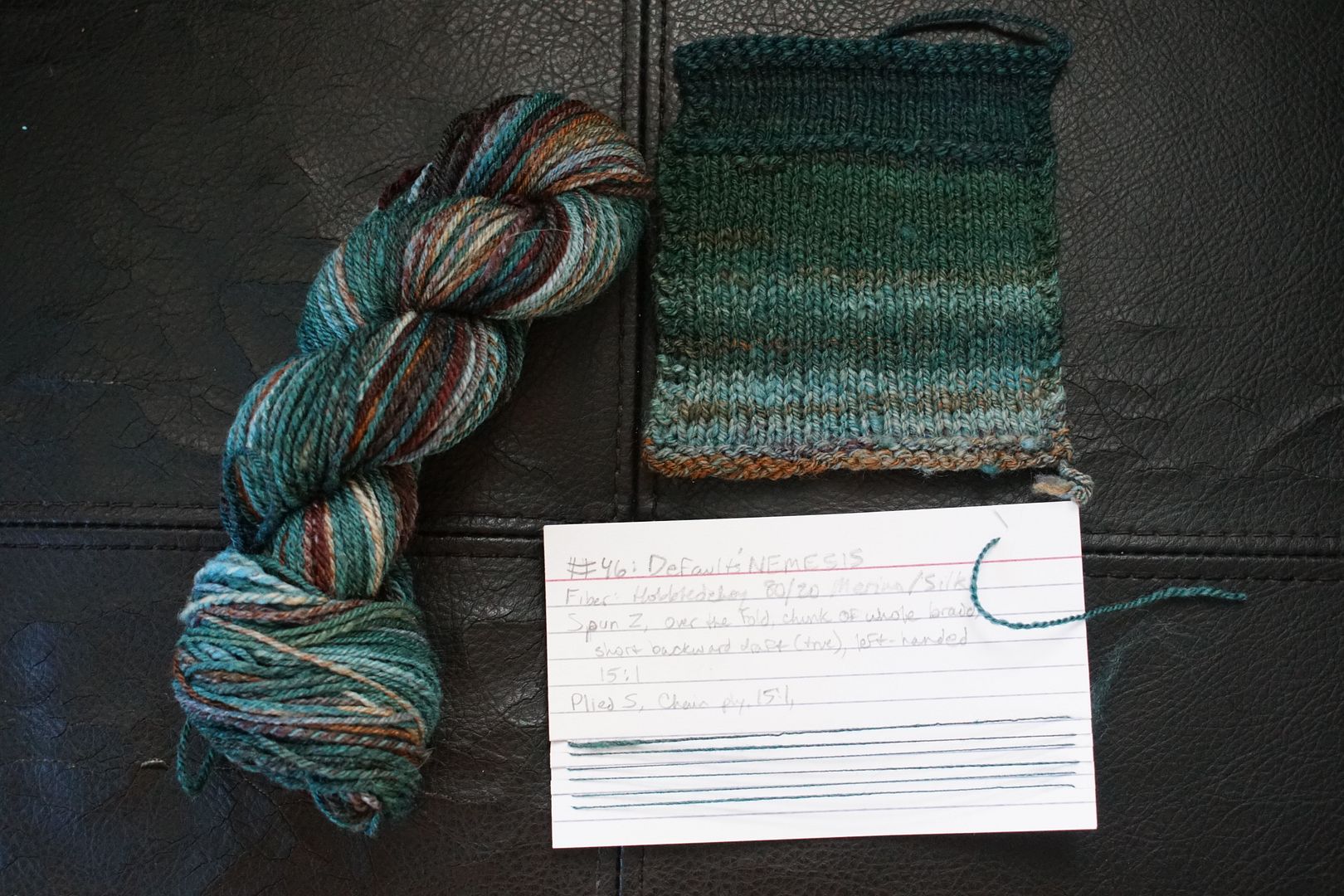
3 thoughts on “45 of 51 Yarns: My Default Yarn’s Nemesis”